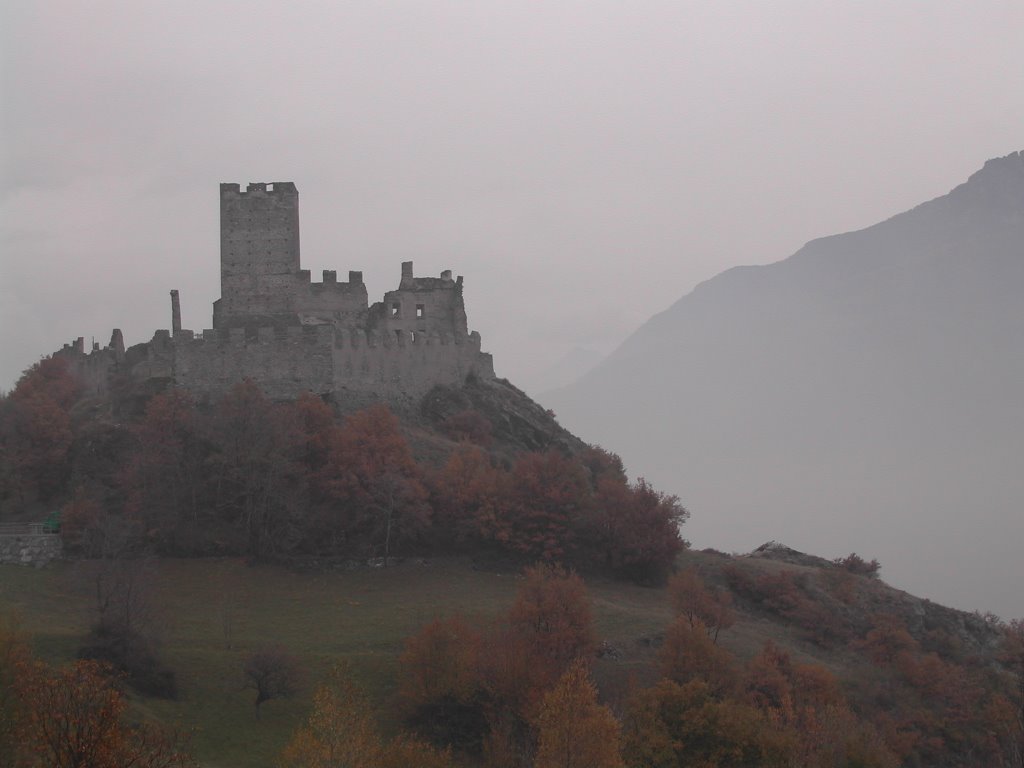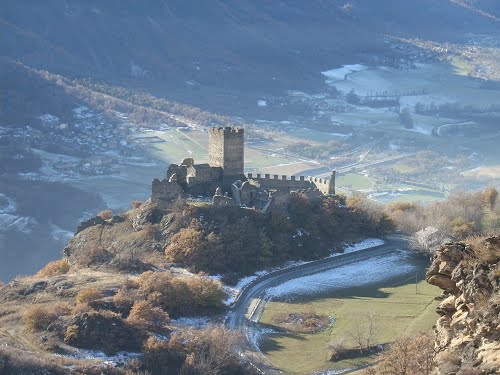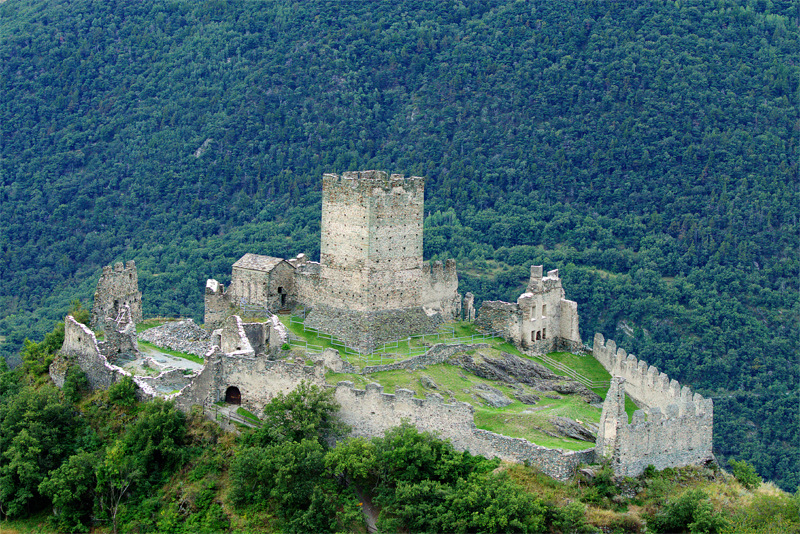
Cly Castle
This post is also available in:
 Italiano (Italian)
Italiano (Italian)
The castle of Cly, built on a sheer rocky peak, exploits the natural defensive vocation of the site. The need to control and protect the cultivated lands and neighbouring settlements was the very soul of this fortress.
The Castle is the result of several construction phases that seamlessly followed one another from the first half of the XI century to the XVI century.
It consists of a massive central “donjon” (a keep) surrounded by large perimeter walls which also enclosed some other buildings; the walls, still almost entirely preserved, were surmounted by battlements and stretched on approximately 3.350 square yards.
The western part of the castle has always been devoid of any type of structure and used to be a simple esplanade where the local population would seek refuge in the event of an enemy attack. The area to the south-east, on the other hand, housed the buildings, including the massive central tower, the chapel, the kitchens, the stables, the guardhouse, and the castle’s noble abode. In the northwest corner, there are the remains of a tower which used to stand on top of an underground cistern for water collection, plastered in “cocciopesto” (a building material used in ancient Rome, made of tiles broken up into very small pieces, mixed with mortar, and then beaten down with a rammer) to be waterproof.
The keep – the massive central tower – was basically a square-planned “donjon” over a rock ledge, which would be impossible to dig for any enemy in order to get under the very structure and make it collapse.
The tower was built on three floors with the access gate at ground level. Originally, a wooden ladder was used to access the tower, later replaced by a stone staircase supported by an arch, which has eventually collapsed in the course of the centuries. Over the years, the tower must have undergone some alterations, as evidenced by a new door and some walled windows.
Leaning against the keep, are the remains of the small Romanesque chapel dedicated to Saint Maurice, probably dating back to the XI century. The apse, facing east, was originally frescoed with figures of angels, saints and evangelists: now only a few fragments are still visible. The residential buildings and the guardhouse, located in the southernmost part of the castle, are now reduced to a state of ruin and can be barely recognized.
THE GARDEN
The green area surrounding the castle is of no particular importance.
This post is also available in:
 Italiano (Italian)
Italiano (Italian)
Contatti
Saint-Denis(AO)
0166 546014
http://www.comune.saintdenis.ao.it
Altre info
A pagamento: intero: 2.00 euro; ridotto: 1.50 euro - Comitive di almeno 8 persone paganti. Ultima visita consentita mezz'ora prima dell'orario di chiusura. Visite guidate ogni mezz'ora. Visite gratuite per visitatori con età inferiore ai 12 anni e superiore ai 65 anni.
Nei mesi di luglio e agosto. Chiusura settimanale il lunedì.
Da martedì a domenica: 10-12.30, 14.30-18


